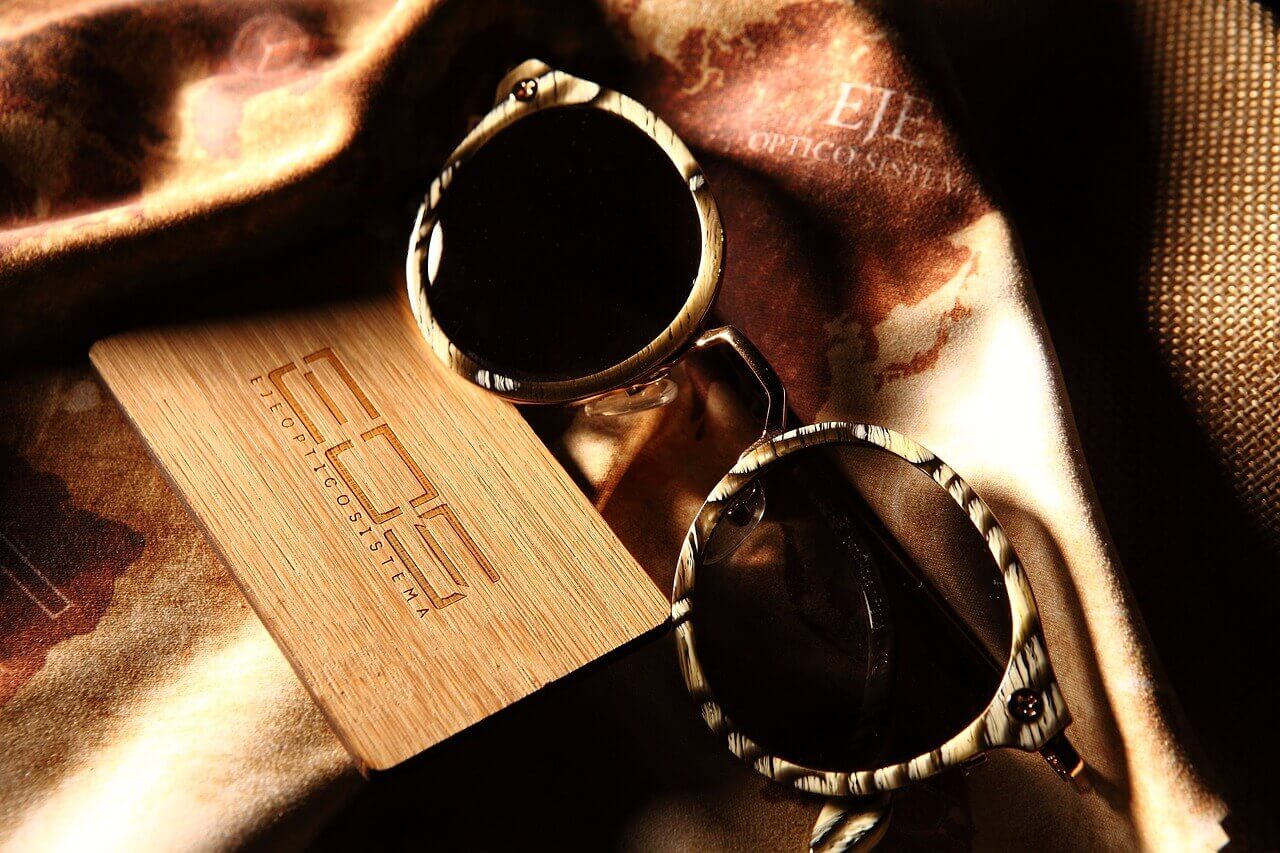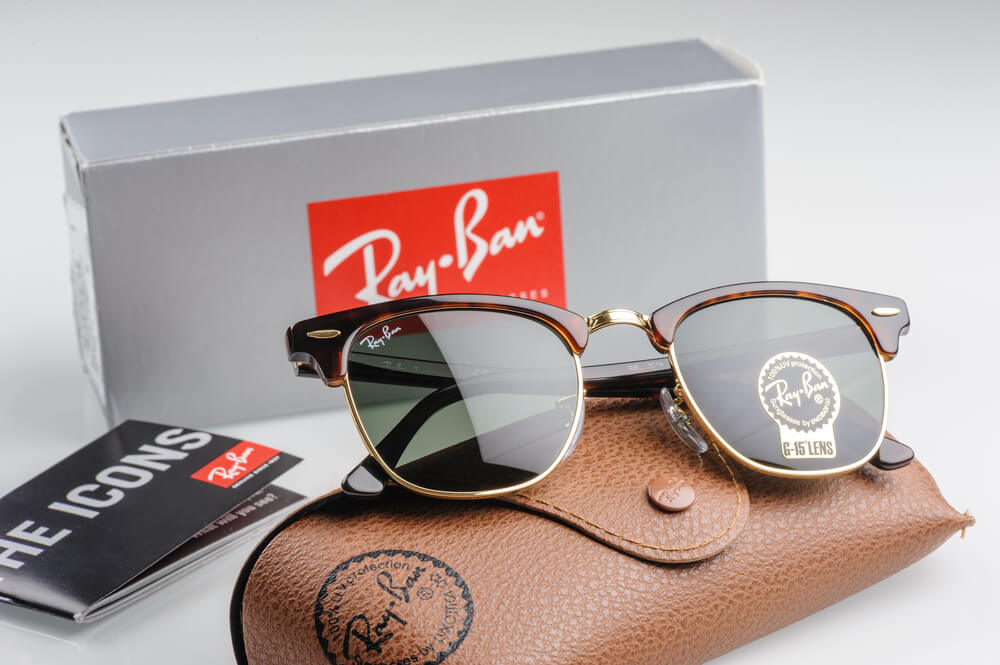Fake vs Genuine Sunglasses: How to tell the difference
In a market filled with knock-offs, being able to spot genuine designer sunglasses is no easy feat. This in-depth guide will help you spot authentic Oakleys, Pradas, and Ray-Bans while staying away from the fake rip-offs, taking into consideration factors such as price, finish, authenticity certificates, packaging, SKU, barcode, lens etchings, stickers, lens clarity, logo placement and more.
1. Price: Genuine designer sunglasses, typically demand a premium price, this is as a result of their craftsmanship and the high-quality materials that are used. A seemingly unbelievable deal should make you a sceptic. If the price looks too good to be true that's probably because it is.
2. Finish: Original designer sunglasses usually have a flawless finish. Any unevenness, rough spots, or bumps should send your counterfeit alarm bells ringing.
3. Certificate of Authenticity: Reputable designer sunglasses often come with a certificate of authenticity. If it's not included, you may have a fake on your hands.

4. Packaging: Authentic sunglasses come in high-quality packaging, with the brand's logo prominently displayed. Shoddy packaging or logos all over the place are obvious signs of a fake.
5. SKU & Barcode: Authentic sunglasses have unique SKUs and barcodes, you will find them on the inside arm and they will be easy to read with clear even straight printing. Always check that the codes align with those listed on the brand's official website otherwise you could be paying good money for a counterfeit.
6. Lens Etchings: Many designer sunglasses have subtle etchings on the frame and in many cases a subtle etching on the lenses too, which is something fake glasses normally don’t include or try very badly to do so.
7. Stickers: Genuine sunglasses very rarely have stickers on their lenses. On the other hand, counterfeits normally use stickers, some even making fraudulent and harmful claims that read "UV protection" when they are not.
8. Lens Clarity: Authentic sunglasses offer superior clarity, while fakes might distort your vision or show blemishes.
9. Logo Placement: Logos where there shouldn’t be one is very common in the world of fakes. You should always verify official images from the brand’s website for confirmation.
10. Raised Seams: Genuine sunglasses typically have smooth seams. If you can easily notice glue or raised seams it means you could have a counterfeit in your hands.
11. Spelling: Even though this point doesn’t make sense or has no logic at all, counterfeit products sometimes are almost replicated exactly as the genuine version but often have spelling errors on the packaging, certificate or even the brand name itself. Look out for any misspellings.
12. Ear Socks & Rubber Pieces: On authentic sunglasses and glasses, for instance, Oakleys, a soft, high-quality rubber is used for a better grip. Fakes usually go with a hard plastic instead.
13. Size: Counterfeit sunglasses normally don’t stick to the original size specifications. It’s usually not a massive size difference but if you know your glasses it's enough for you to spot that it’s a fake.
14. CE Marking: Sunglasses sold in the EU should carry a "CE" marking, indicating compliance with European safety standards. The absence of this mark on designer sunglasses sold within the EU is a warning sign. After Brexit, the familiar CE marking was stopped in January 2023 and the UKCA marking is used for placing goods on the market in Great Britain from January 2023.
Spotting Fake Oakley Sunglasses:

SKU and Model Numbers: Genuine Oakleys feature an SKU that usually begins with 'OO'. Fakes often miss this detail. Additionally, Oakley's display model numbers and colour codes on the inside of the arms. Compare these details with the official website.
Ear Socks & Nose Pads: Genuine Oakleys have high-quality rubber ear socks and nose pads. The rubber is soft and maintains its grip when you sweat. Counterfeit versions often use lower-quality materials that feel hard and slippery.
Logo: Genuine Oakleys have the 'O' logo on their arms, which should be placed perfectly with no rough edges or misalignments. Some fakes may have painted logos that are prone to chipping off.
Spotting Fake Prada Sunglasses:
Model Numbers: Prada sunglasses also feature model numbers on the inner side of the temple. Authentic pairs will have the model number, lens type and measurements displayed clearly.
Prada Logo: Authentic Prada glasses will have the Prada logo on the lens and temple. Counterfeits may slip up with the logo by using incorrect fonts or uneven placement.
Case: Genuine Prada sunglasses come with a high-quality case that has the brand’s logo. If the case is missing or the logo on it is different from the official Prada logo, it's a counterfeit.
Spotting Fake Ray-Ban Sunglasses:

Serial Number: Genuine Ray-Ban sunglasses feature a serial number etched on the inner side of the temple or earpiece it will typically start with an RB. If there isn’t one or it doesn’t match up with the official database it’s a counterfeit.
Lens Logo: Authentic Ray-Bans have a 'RB' etched onto one lens, and the Ray-Ban logo on the other. Fakes often use a painted 'RB' instead or mess up where it should go or even the spelling of the logo.
Case: Genuine Ray-Bans come with a high-quality case. The logo should be embossed and it should also include a branded cleaning cloth.
By going through the above checklist, we hope you will find it easier to tell the difference between authentic and counterfeit designer sunglasses. Remember: if in doubt, always cross-check with official product images and descriptions on the brand’s website. It's your investment; so make sure it's spent on the genuine product you want, and not a low-quality and potentially harmful imitation.
Author: John Dreyer Optometrist Bsc(Hons), MCOPTOM, DipCLP
Created: 12 Jul 2023, Last modified: 7 Jan 2025

